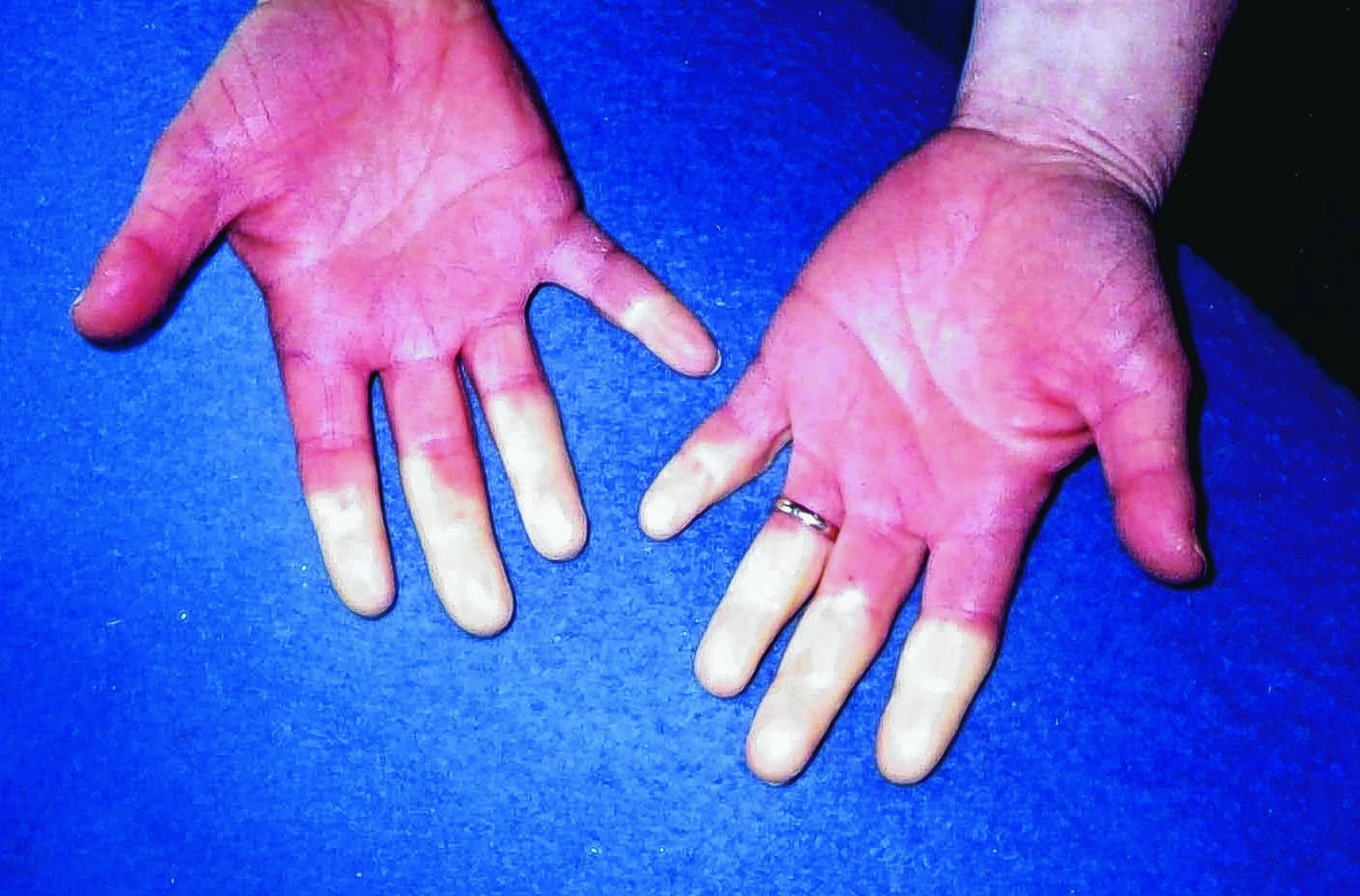Most people have cold hands at this time of year. But there are cold hands, and there are Raynaud’s cold hands. If you’re not sure what that means, then you’re probably not one of the 10million people in the UK, or one of the 10% of women, thought to suffer from Raynaud’s.
Named after a French doctor in 1862, Raynaud’s is a condition where, when exposed to cold temperatures, blood vessels go into temporary spasm, blocking the flow of blood and causing the affected area to turn white, and then blue, then red as the blood flow finally returns.
“This affected area is most commonly the hands,” explains Dr Auldric Ratajczak, deputy medical director at Nuffield Health. “Some sufferers are affected on their feet too, but this is rarer.”
DIFFERENT TYPES
Generally, it’s people with secondary Raynaud’s who’ll notice their toes undergoing this ‘blanching’ process, while for those with primary Raynaud’s it tends to be confined to fingers.
And the difference between this secondary and primary?
“It’s simply that primary is when it’s the condition on its own, and not linked to anything else, while secondary is when the Raynaud’s is just one extra symptom from another condition.”
Often, this other condition is an auto-immune disease, like rheumatoid arthritis or lupus, and for that reason, those with secondary Raynaud’s often tend to be diagnosed later in life.
“Primary Raynaud’s is more a young women’s disease, though,” Dr Ratajczak notes. “A lot of sufferers are young adults, diagnosed before or around the age of 30.”
CAUSE UNCLEAR
The exact reason some people get Raynaud’s is uncertain. Some experts say the condition is more common in slimmer women, and it’s therefore easy to relate it to less body fat and the poor circulation sometimes associated with that. It’s also sometimes believed that it can run in families or possibly linked with poor immune function.
But even if the explanation of exactly why it happens is unclear, exactly what happens is this: “The normal reaction to cold is that the arteries and blood vessels constrict,” say Dr Ratajczak. “Raynaud’s is doing this, but then going too far, and cutting off the oxygenated blood supply.”
In some more extreme cases, this will happen not just when you step out in cold weather, but when you simply sit under air conditioning, or stick your hand in a fridge, or run it under the cold tap.
The thought of your hands turning white every time you grab some milk sounds infuriating enough, but it’s not just the discolouration you have to face with Raynaud’s.
“There can be excruciating pain too,’ says Dr Ratajczak. “Not so much when your hands or feet are cut off from the blood flow, but when you warm up again and the blood returns.”
Warming up the extremities, however, by putting on gloves or running them under warm water, is really the only comeback from an attack of Raynaud’s.
AVOIDING TRIGGERS
So, as with many conditions, the real answer is about prevention rather than cure.
“Living with Raynaud’s means knowing what your triggers are – be that cold weather or air con – and then being prepared with gloves and so on,” says Dr Ratajczak. “It’s also about avoiding anything that can make the condition worse; smoking, for example, is known to make it worse due to it narrowing the blood vessels, and for some people being stressed or anxious is another trigger. If so, learn to manage it with mindfulness.”
He adds that certain medicines have been linked with an increased severity of Raynaud’s, particularly certain migraine and sinus treatments.
On the flip side, some natural supplements have been found to help people with Raynaud’s, from fish oil and evening primrose oil to ginkgo biloba and ginger.
DO YOU HAVE RAYNAUD’S?
An attack of Raynaud’s can last from several minutes to several hours. There are three main stages to look out for:
- The affected body part turns white because blood supply is restricted.
- Lack of oxygen turns the area blue and this can feel cold and numb.
- As blood returns at a higher rate than normal, the skin turns red, and will probably be accompanied by tingling or throbbing sensation, and maybe some swelling.
